The Coffee Bloom: Why Blooming Matters A Baristas Opinion
You know what they say, coffee is a terrible thing to waste.
Well, I’m saying it anyway.
If you take your coffee seriously at all (and if you don’t, please don’t tell me), the last thing you want is to waste your efforts and precious beans with subpar brewing.
But if you don’t know about the coffee bloom you just might be keeping your coffee from being all that it could be.
So what does it mean to bloom coffee, and why is it a good idea?
Blooming is a strongly held conviction by many coffee lovers. You don’t want to miss out. So let’s walk through the process and how to do it.
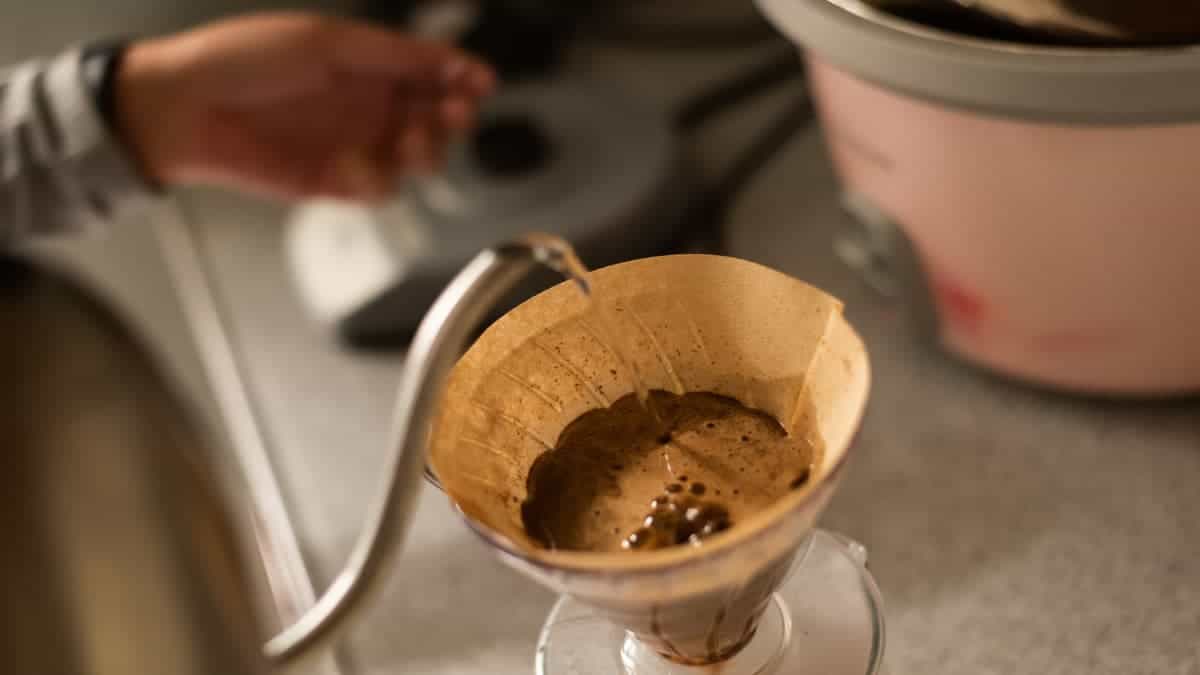
What Is The Coffee Bloom?
Have you ever brewed a cup of coffee and found the water bubbling up over the grounds like a stew gurgling on the stove?
That, friend, is the coffee bloom. Or specifically, the release of carbon dioxide naturally contained in a freshly roasted coffee bean.
So blooming coffee is pouring a little water over your fresh coffee grounds for about 30 seconds to allow for this CO2 release.
You may even include blooming during your coffee brewing routine without knowing it. Many brewing methods call for soaking ground coffee before brewing; it may be included in the instruction manual of your coffee maker, like an Aeropress or pourover.
And if you’ve ever presoaked grounds in a portafilter — called pre infusion — you have bloomed espresso!
Without realizing why, you may already be in a coffee blooming habit.
Carbon Dioxide Release
The coffee bloom is the release of carbon dioxide (CO2) when brewing fresh coffee.
CO2 is naturally found in beans after roasting. The heat produced in the roasting process traps CO2 in the beans. So fresh beans give off that CO2 for about two weeks after roasting, although they give off less over time.
Adding hot water — such as during the brewing process — speeds up the release of CO2. That’s how blooming works: You soak the grounds in a little water to allow for the CO2 to dissipate (degassing). Then you can move on to brewing.
By the way, another factor affects how much gas coffee beans release: grinding.
Grinding coffee beans increases their surface area, which means there’s a lot more room to give off CO2. That’s why waiting to grind beans until shortly before you brew is so important. You want coffee to bloom before brewing, not too early.
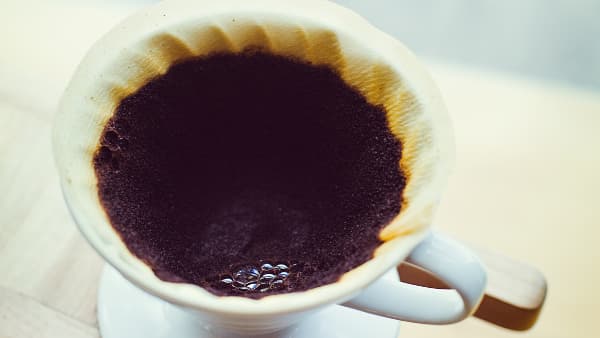
Impacting Flavor
Blooming improves the flavor of coffee.
All coffee types are brewed with some amount of water. But CO2 naturally repels water, which is a bit of a problem in the brewing process, when you need water to pick up flavor from the coffee grounds.
If you bloom the grounds and release the CO2, it’s no longer there to get in the water’s way. With water extracting flavor, oils, and aromas more easily, brewed coffee will have a much stronger flavor.
Carbon dioxide tastes sour, too. So allowing more of it to dissipate before brewing also leaves you with a better flavor. It won’t remove all the natural sourness of a roast, but the distinct sour flavor of the CO2 isn’t pleasant for most. You most likely don’t want it in your cup.
What Does Blooming Coffee Do?
So you know that blooming brings out the trapped gasses from coffee beans. And you know that removing gas creates a stronger flavor without the sour off-taste of the CO2.
But why bloom grounds at all instead of grinding coffee early and skipping the hassle?
Coffee grounds quickly lose their flavor after grinding — as soon as 20-30 minutes after. That’s because of the degassing process.
For delicious coffee, you need to release CO2, but you need to do it shortly before brewing, leaving just enough to create a dynamic flavor but not so much that the coffee stays acidic and sour (unless you like that!).
That’s why brewing coffee fresh and blooming it are key.
Blooming your coffee has another key effect: ensuring complete extraction.
In some brewing methods, like French press, the water will eventually reach through and around all the grounds. But in methods like pourover, drip, or espresso, that won’t always happen.
Sometimes, the water creates channels through the grounds, and then it will prefer those channels (literally the paths of least resistance) over and over during brewing. That will leave some of the grounds under-extracted, which means your flavor is less strong.
Blooming (and pre-infusion) helps coffee grounds soak evenly. Then when you start brewing, the water is much more likely to reach everywhere in the filter/basket.
Why Bloom Coffee?
Blooming your grounds before brewing is an easy way to maximize your brew.
It releases CO2 beforehand, which reduces the sourness of the flavor and increases extraction. Plus, it ensures an even soak of your grounds before brewing, which also ensures complete extraction of the grounds and therefore helps your coffee brew nice and strong.
Even if you’re skeptical of the added benefits of CO2 release, it’s just plain bloomin’ easy! All you have to do is soak your grounds in a thin layer of hot water for about 30-40 seconds.
You don’t have to go far out of your way to bloom grounds, and you for sure get at least one benefit (an even soak for better extraction), and likely two (improved flavor from the CO2 release).
Really the question should be why not bloom? (We’ll get to that below if you’re curious!)
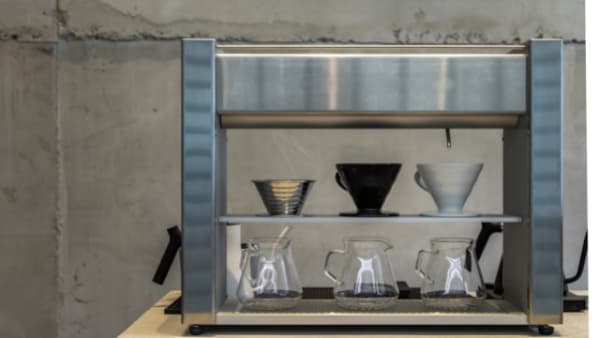
How To Bloom Coffee
Blooming is worth a try, so here’s how to bloom coffee for different brewing methods:
Pourover Bloom
To bloom with a pourover, set up your brew as usual and pour 40-80g of hot water (not quite boiling) over the grounds in a circular motion. Make a spiral as you pour, moving from the outside in. Let it sit for about a minute.
You want the grounds evenly soaked, without pooling the water. So you need more or less water for your pourover maker. A few drops of coffee will trickle through and that’s okay. The water may or may not bubble.
In addition to CO2 release, blooming is a really good idea for pourovers to ensure the water will make its way through all of the grounds.
With the shape of pourovers like Chemex and the nature of pouring water over the grounds in a stream, you don’t want to risk the water creating channels in the grounds (and thereby neglecting the rest of the grounds).
French Press
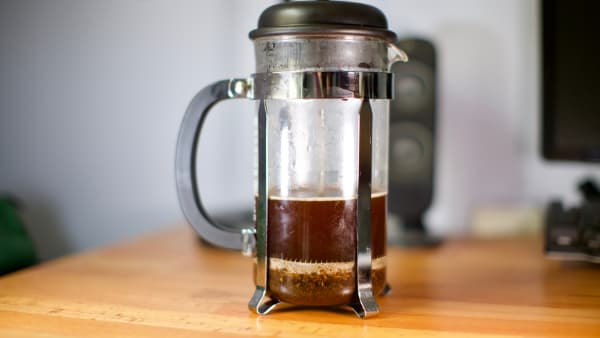
To bloom a French press, prepare your coarsely ground coffee as normal and put them in the French press.
Pour enough hot water over the grounds to soak them, but don’t let the water level get very high up the French press pot yet. Bubbles should form.
Give it 15-20 minutes, then stir. Now you can finish making your French press as normal, steeping 3-4 minutes with a normal amount of water.
Stirring the grounds ensures the bloom is completed for all the grounds.
Even though the grounds will sit in water for a long time in a French press, it’s still worth blooming with this brewing method for flavor. Blooming before you brew will minimize sour acidity — which can be a real benefit if you don’t like how sour French press tends to be.
Automatic Drip
Just like pourover, your drip coffee should be bloomed, too.
To bloom in an automatic drip coffee maker, pour in enough hot water to soak the grounds. Try not to let the filter basket fill up or to cover the grounds with a layer of water. You want enough to soak the coffee, but not so much that it starts to brew and pour through the filter. (A few drops are unavoidable.)
Wait anywhere from 45 seconds to 1.5 minutes. Then you can brew your drip coffee normally.
Again, one of the main benefits here is that the water will soak the grounds evenly and ensure even extraction. You can check that that was true for your brew by checking the filter basket on your drip coffee maker after the brew cycle is done.
If you see a depression in the center of the coffee bed from where the water drips in, it probably wasn’t thoroughly extracted. But if you see little or no evidence of a depression, the water probably made its way through the grounds well.
Cold Brew
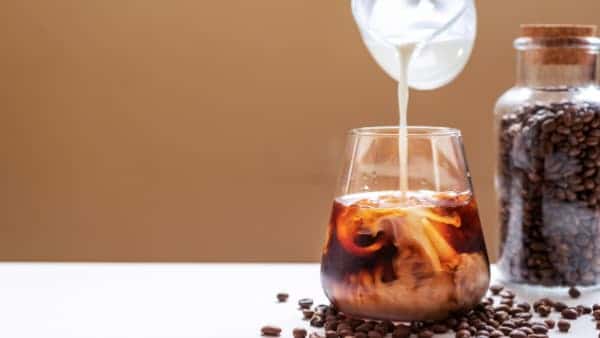
That’s right, you can bloom cold brew coffee with hot water!
When you add your grounds to a cold brew coffee maker (or you know, a large tub if you’re easy going), pour a little hot water over it first.
If you’ve been reading so far, you know you just need enough water to soak the grounds, but not a full layer of water or anything. This is cold brew after all.
You only need to let the water sit for about 30 seconds. The grounds will have plenty of time to soak and brew, so you only need to bloom for a minimal time.
After you’ve let the grounds sit, you can add the appropriate amount of cold water and let the coffee brew for 12-48 hours.
The cold brew method of coffee brewing isn’t going to give water a lot of trouble extracting from all the grounds, and frankly, the super long brewing time calls the need for CO2 release into question.
But there’s still a major flavor benefit to using the hot bloom method when making cold brew.
Many people don’t actually like the flavor of cold brew (I know, shocking!), but the hot bloom method of making cold brew coffee tends to change that.
Since it lowers the sour acidity and leaves you with a strong, but not as sharp coffee, hot blooming is a great way to make cold brew for people who swear they “don’t like cold brew.”
Manual Espresso Maker
Automatic and semi-automatic espresso machines often have the ability to bloom built-in. They just call it “pre-infusion.”
To bloom with a manual espresso maker, fill and set up your portafilter in the machine as you normally would. Press the hot water button and allow water to run into the grouphead for about 1 second then turn the water off immediately.
You won’t be able to check, but the goal is to let the filter basket fill just a little with water so the grounds can soak (pre-infuse). Keeping this visual in mind may help you time the water better.
Let the portafilter sit for a few seconds, about 2-8 (in coffee shops we usually did 2-3 seconds). Then pull the shot as you would normally.
Preinfusion or blooming is crucial in pulling espresso shots to make sure the grounds soak evenly. You’ve only got 20-30 seconds to pull a shot, so you don’t really have time to wait for the water to soak through the grounds on its own.
Even though it’s forced into the filter with a lot of pressure, the process is too quick to risk the grounds not soaking. And a poorly made espresso is just a tragedy.
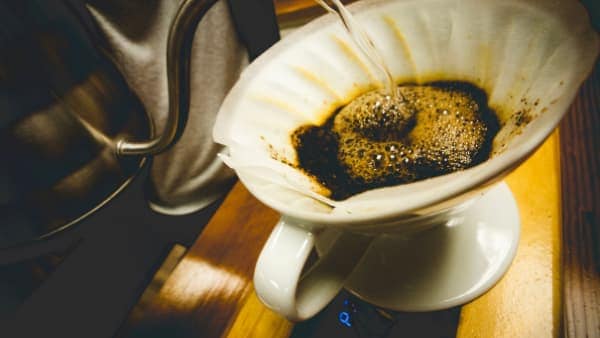
Factors In Blooming
There are a few factors that can affect the blooming process.
In addition to freshness (you have about a 14-day window after roasting and very little time after grinding), you also have to use the right water temperature. Heat releases more CO2.
The outside temperature can also play a role, so you may need to adjust the temperature of your water if it’s a cold day and you’re using room temperature water (say, for cold brew).
Humidity plays a role as well. Dry areas allow for more degassing than humid regions. Don’t expect to bloom as well in Texas as you do in British Columbia!
Bean hardness is another factor that might affect the bloom. The harder the coffee bean, the harder it is for the gas to escape. So if your bloom is less than spectacular, this might be the reason.
The roast can also affect your bloom. Darker roasts usually degas less than other roasts. But the growing region complicates things, too, which is why your dark Italian Arabica may behave differently than a dark Colombian roast of the same age and roasting level.
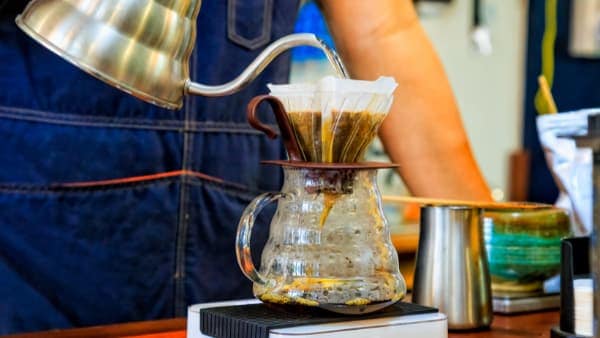
When Should You Not Bloom Coffee?
First of all, if your pre-ground beans have been hanging out for a few days or if your whole beans are a couple weeks old, you don’t need to bother blooming your coffee grounds. It’s almost certainly not gonna happen.
Otherwise, it’s a matter of taste and interest. Some prefer unbloomed coffee because it’s less extracted and creates a brighter, more acidic flavor.
It’s also a matter of belief. Many coffee enthusiasts are bloom believers, but others are skeptics.
We’ve talked about the science behind blooming. If you’re interested in the science behind the skepticism, here’s an interesting experiment by a coffee scientist that found brewing with and without blooming produced negligible differences in the amount of CO2 given off.
The difference in flavor you notice may also be more or less pronounced depending on the brewing method.
True espresso is brewed in under 30 seconds — the amount of time you’d bloom your coffee, but a pour over or French press is brewed for a few minutes, which might — depending on which camp you subscribe to — allow for the CO2 to dissipate on its own without impacting brewing.
Most coffee enthusiasts seem to taste a difference when blooming their coffee. Try it for yourself and see what you notice.
Wrapping Up The Bloom
Blooming your grounds before brewing coffee is the little power hack you didn’t know you needed — and maybe the hack you didn’t realize you were already doing.
The bloom is such a simple, quick thing to do, and yet it can have a surprising impact on the flavor and extraction level of your coffee. Plus, let’s be honest, if you’re blooming a pourover, it just looks really fancy.
While the jury is out on the benefits of early CO2 release when blooming, the process is beneficial for extraction and really does impact flavor (because of carbon dioxide release or not).
If you haven’t already, give the coffee bloom a try!
Frequently Asked Questions
Does coffee bloom matter?
Yes, the bloom matters.
While you may or may not prefer the flavor of bloomed coffee, the blooming process (a.k.a. the carbon dioxide release) affects the flavor of the brew.
Most coffee drinkers appreciate the stronger, less sour flavor of coffee that’s been bloomed.
Why doesn’t my coffee bloom?
If your coffee isn’t fresh, it won’t bloom.
Coffee beans give off carbon dioxide for about two weeks after roasting. But that process is sped up significantly once you grind it. Coffee will not bloom if the grounds aren’t fresh, just as it probably won’t bloom if the beans are more than two weeks old.
If the beans you’re using are very hard or the water you’re using isn’t hot enough, these factors can also diminish the bloom you get with your coffee.
Finally, over-roasting will also diminish your ability to bloom your coffee.

